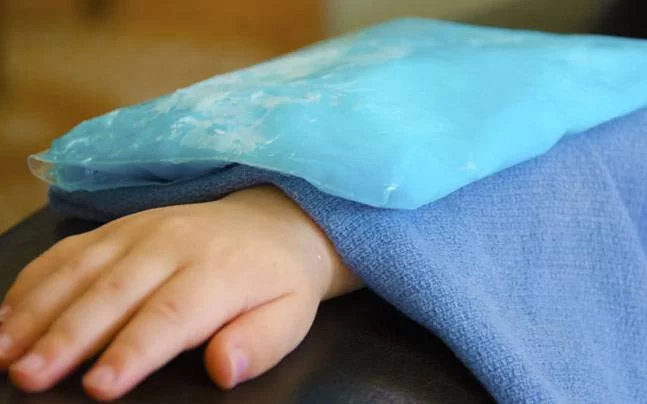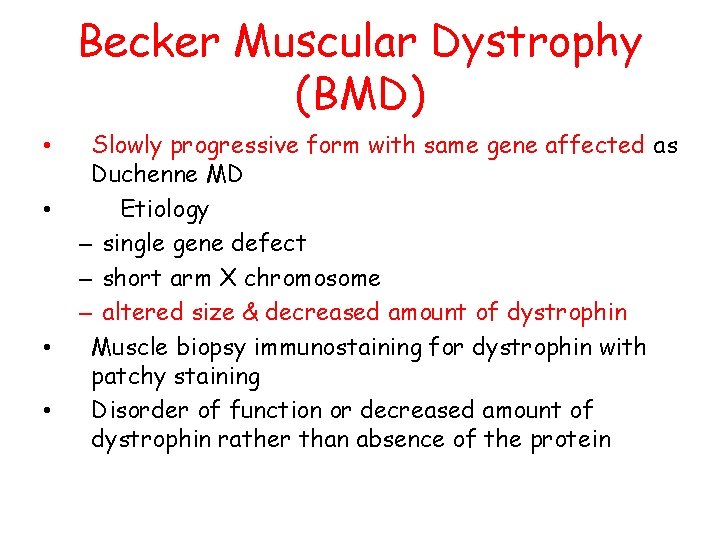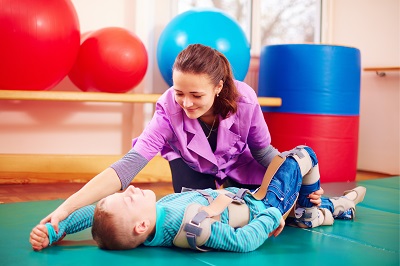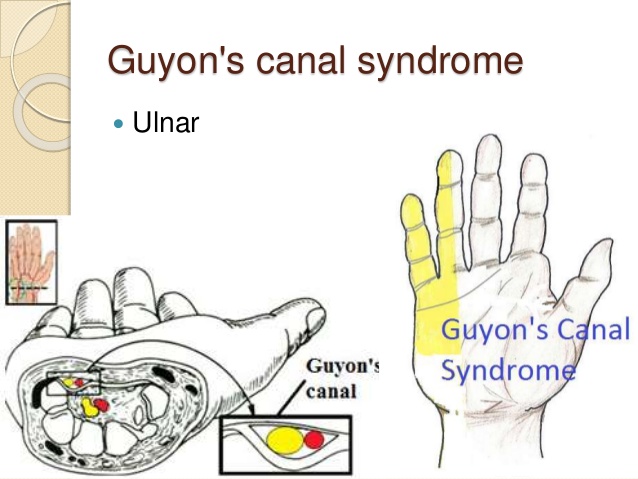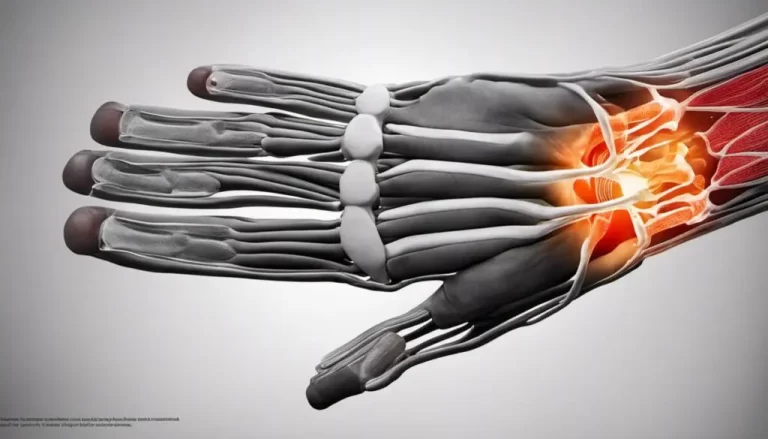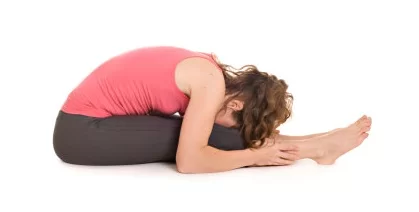Cold Therapy or Cryotherapy
Table of Contents
What is Cold Therapy or Cryotherapy?
Cold treatment (Cryotherapy), often known as ice application, is the simplest and oldest method of treating injuries.
Its global popularity grew due to its efficacy, convenience, low cost, and simplicity of travel.
Ice is considered to relieve pain by inducing local anesthesia. It also reduces edema, nerve conduction velocity, cellular metabolism, and local blood flow.
The impact of cryotherapy is determined by the procedure, duration, ice temperature, and subcutaneous fat depth.
Cold treatment of injured tissue is an age-old technique in medicine.
Nowadays, the actual temperature of the tissue can be reduced by applying various forms of ice or frozen gel packs, or by draining volatile fluids from the skin.
Often, the skin temperature is decreased to 10°C.
Physical principles of cold therapy:
Cold treatment works by transferring heat from the skin to the ice, causing it to melt.
Ice needs a lot of energy to change state.
It takes 491 J to heat 1 g of ice at 0°C to 1 g of water at 37°C.
Raising 1 g of water from 0°C to 37°C needs just 155 J.
As a result, while attempting to chill tissues, ice, rather than cold water, should be used.
Physiological impacts:
Circulatory reaction
The skin’s initial response to chilling is an attempt to maintain heat, which is performed by an initial local vasoconstriction.
This hemostatic reaction allows the component to become very chilly.
After a shorter period, there is vasodilation, followed by alternating periods of constriction and dilatation.
Lewis ‘ hunting reflex is this seeming pursuit of a mean point of circulation.
Uses of physiotherapy in circulatory effect:
Limit the extravasation of blood into tissue, such as sports injuries.
Reduce edema and increase circulation.
The lower metabolic rate of cooled tissue
Neural reaction
The skin has major thermal sensors.
There are substantially more cold receptors than warm receptors.
The cold receptors respond to cooling by releasing impulses at a steady pace, which rises as the temperature drops.
The first fibers impacted by progressive cooling are A fibers.
Fibers are impacted when temperatures are very low, as in B and C.
For motor paralysis: fibers A
Deep pain equals fibers C.
Reduce pain
This is one of the most significant consequences of ice.
Ice has been used to treat pain for many years.
Ice is now working on the pain gate idea.
Reduced spasticity
Ice has been shown to alleviate muscular spasms and stiffness.
Techniques for applying cold therapy:
- Ice towels
- Ice packs
- Immersion
- Ice Cube Massage
- Exciting Cold
- Cold compression unit.
- Cold and ice sprays
Ice towel
This is a common way of application.
Because there is little risk of causing an ice burn.
Preparation of ice towel:
To prepare an ice towel, remove all blankets and sheets and cover the bed with waterproof material.
Adequately expose the portion to be treated.
Protecting any clothes that the sufferer must wear.
Fill a bucket or big dish with two parts flaked or crushed ice and one part water.
This mixture should produce a mulch in which two cotton towels are submerged.
Application of the ice towel:
One towel is squeezed to remove excess water, leaving as much ice as possible.
Applied to the area being treated.
Towels are replaced every 30 seconds, but no more than 2 minutes.
Up to ten towels can be applied in succession.
The whole treatment time is around 15 to 20 minutes.
Modification of technique:
To alleviate swelling, elevate the limb and wrap it with cold cloths.
The patient can exercise with the towel in place.
The patient uses relaxation/facilitation techniques on spastic muscles while using the towel.
Ice pack
Cracked or broken ice can be placed in a specially designed terry towel bag or on an ice towel twisted into an appropriate shape.
Preparation of ice pack:
To prepare an ice pack, fold a polythene sheet and set it on the bed.
A folded towel is put beneath its borders to direct the water created by the melting ice into a receptacle at the side of the bed.
The gutter will be positioned underneath the component to be treated.
Preparation of the patient:
To prepare the patient, expose the portion to be treated and arrange it comfortably over a prepared gutter.
A vegetable or nut oil is applied to the skin where the ice pack is to be put.
This is to try to avoid burns.
Ice burns are caused by supercooling the skin.
This might happen if water from the pack collects between it and the skin.
It collects salts from the skin and gets very chilly.
The coating of oil helps the water created by the melting ice to flow swiftly and readily off the skin and into the gutter, preventing overcooling.
Oil has a low freezing point, which prevents the pack from freezing into the patient’s skin.
Melting the ice is an important aspect of the therapy because the water created transfers heat from the skin to the ice inside the pack.
Application of the patient:
The patient application involves placing a wet ice pack on the affected area.
Packs should never be used to encircle a limb since they will certainly exert strain on one feature of the limb and restrict local circulation.
Reduced circulation would inhibit the typical circulatory reaction to chilling and might result in an ice burn.
The pack may be left in place for 10 to 20 minutes.
Immersion
Immersion is a procedure in which the portion being treated is submerged in an ice solution.
Unfortunately, immersion is only practicable for select locations, such as the hands, feet, and elbows.
Preparation of immersion:
To prepare for immersion, combine 50% ice and 50% water in a suitable container.
Application of the immersion:
To apply the immersion technique, the patient immerses the component in the solution for either a single ten-minute session or a series of shorter immersions until the total time is 10 minutes.
The patient frequently suffers extreme agony in the submerged area, which might be so severe that he faints.
He should consequently be well supported and monitored during his therapy.
Ice cube massage
Ice cube massage is a convenient way of application since it does not require an ice machine.
The freezer section of a household refrigerator is enough.
This makes this strategy suitable in tiny departments, internal offices, and, most crucially, at home.
Preparation of ice-cube massage:
To prepare for an ice-cube massage, cover one end of a huge block of ice with a cloth and leave the other end free.
The patient received appropriate exposure and assistance.
Application of ice-cube massage:
To perform ice-cube massage, use the exposed end of the block to massage the treatment area in a circular motion. perform minimum pressure.
The maximum application time is ten minutes.
The intended result might be obtained before this.
This approach is especially beneficial in the treatment of bedsores for roughly 2 minutes.
The skin is then delicately dried.
The ice application is done three or four times.
A significant increase in circulation occurs nearly immediately, which should speed mending.
A similar procedure may be performed on pressure regions that are about to break down, since increased circulation may prevent this.
Exciting Cold
Ice’s strong sensory stimulation on the skin might be utilized to help inhibited muscles contract.
It is required to first determine the spinal root level supply of the inhibited muscle, and then discover the patch of skin that has the same root supply.
Once this is completed, the ice is swiftly stroked three times over the dermatomes before being dried.
Cold therapy machine:
Cold therapy equipment is widely utilized for treatment.
Cold compression unit
Cold treatment with compression is circulating cold water via a sleeve that is placed over the limb, and a portion of it is inflamed at regular intervals.
Cold/ice sprays
Ethyl chloride was first utilized, however it is very inflammatory and hence carries certain dangers.
Fluoromethane is currently frequently utilized since it is non-flammable.
The liquid is sprayed onto the area to be cooled in a series of 5-second strokes separated by a few seconds.
The nozzle is held at a 45-degree or right angle from the skin’s surface.
Timing of cold treatment in several clinical problems and objectives:
| No. | Conditions | Timing | Objectives |
| 1 | Pain | Acute phase(First 72 hours after a flare-up or injury) | To reduce pain |
| 2 | Inflammation | Acute phase (the first 72 hours following a flare-up or damage) | To minimize the degree of the inflammatory response. |
| 3 | Oedema | 72 hours- 7 days | To assist in phagocytosis of the dead cell material To control extraarticular swelling To quickly resolve intraarticular swelling |
| 4 | Swelling: Intraarticular | After 7-10 days | To assist in the resolution of swelling. normalization of movement, and return of a function( including strengthening) |
| 5 | Swelling: Extraarticular | After 7-10 days | To assist in the resolution of swelling. Normalization of mobility and restoration of function (including strengthening) |
Indications for cold therapy:
Cold treatment is advised for the following medical problems:
- To reduce swelling and edema after trauma, cool in water at 8 º C for 30 minutes.
- To cure burns.
- To alleviate spasticity, the muscle must be cooled; this procedure takes 10 minutes in slim individuals and up to 60 minutes in obese people.
- To alleviate muscular spasms.
- To minimize the acute inflammatory response.
- To alleviate pain.
- To minimize limb metabolism (before amputation).
- To cause reactive hyperemia.
- To assist muscular contraction for various types of neurogenic weakness and muscle re-education.
- To treat reduced knee flexion owing to traumatic lower extremity fractures: This improves the condition more than superficial heat treatment, even when used in conjunction with passive stretching via mechanical traction.
- Ice or cold packs should be applied immediately to superficial burns and burns that cover less than 20% of the total body surface area to reduce pain, edema, erythema, and blistering.
- For best effects in trauma instances, use cold before substantial edema and hemorrhage begin.
Cold treatment treats the following conditions:
- Acute soft tissue injuries include ankle sprains, muscle sprains, and ligament sprains.
- myofascial trigger points
- Tendinitis
- Acute swelling.
- Bursitis
- Post-operative orthopedic procedures, such as TKR, ACL repair, and arthroscopic shoulder surgery.
- Acute Sports Injuries
- DOMS
Who should avoid it? (Contraindications)
CoolSculpting is regarded as a safe and efficient approach to reducing the amount of fat cells in a tiny target region. It is not considered a method of weight loss and is not suggested for the treatment of obesity.
The technique is intended to assist dissolve stubborn fat cells, which are often only reduced by diet and exercise.
People with weakened immune systems are not ideal candidates for CoolSculpting procedures. People with specific diseases that impair or alter the body’s capacity to tolerate colds may also have major medical problems.
CoolSculpting is not recommended for the following conditions:
- Cryoglobulinemia is a condition characterized by excessively high amounts of proteins that typically increase in reaction to cold. This can occur during pregnancy, attempting to conceive, or breastfeeding.
- Cold agglutinin disease is an autoimmune illness in which temperature changes damage red blood cells.
- paroxysmal cold hemoglobinuria is a disorder in which red blood cells die in reaction to temperature changes.
- Raynaud’s Disease
- Symptoms of chilblains include decreased circulation and cutaneous feeling, as well as nerve diseases like diabetic neuropathy.
- Eczema and psoriasis – immune-related skin disorders.
- Inflammatory skin problems, such as dermatitis and hives, recent damage to the treated region, including scar tissue, and long-term usage of blood thinners.
- Conditions that may cause blood thinning include a history of hernias, active medical devices, and allergies to propylene glycol.
- Chronic pain conditions.
- Severe anxiety disorders
Benefits of cold therapy:
Other claimed benefits of cryotherapy may be undermined by future research. However, preliminary research indicates that cryotherapy may provide the following benefits:
Pain alleviation and muscle recovery
Cryotherapy helps alleviate muscular discomfort as well as some joint and muscle problems, such as arthritis. It may also help speedier recovery from sporting injuries.
Doctors have traditionally advised patients to apply cold packs to damaged or sore muscles. This may improve blood circulation when the ice pack is removed, facilitating healing and pain alleviation.
According to research published in 2000, cryotherapy gave brief a decrease in rheumatoid arthritis symptoms. The study discovered that cryotherapy with ice packs helped mitigate the negative consequences of hard exercise. People who utilized cryotherapy also reported feeling reduced pain.
Another 2017 study confirmed cryotherapy’s effects for reducing muscular discomfort and speeding up recovery. However, the researchers observed that cold water immersion outperformed whole-body cryotherapy.
Not all research supports the use of cryotherapy for muscle recovery. A 2015 Cochrane ReviewTrusted Source examined four research on cryotherapy for muscular discomfort and found no meaningful benefits.
Cryotherapy providers have indicated that treatment can aid in weight reduction, however, research may indicate otherwise.
Cryotherapy alone will not result in weight loss, although it may aid the process. In principle, being chilly makes the body work harder to remain warm.
Research claims that a few minutes of Ice therapy can boost metabolism throughout the day. They argue that humans eventually stop feeling cold because their metabolism adjusts and increases in reaction to the cold temperature.
A tiny 2016 research discovered no significant changes in body composition after ten sessions of cryotherapy.
Because cryotherapy reduces muscular discomfort, it may make it simpler to return to a workout regimen after an accident. This possible weight reduction advantage is confined to those who are unable or unwilling to exercise due to discomfort.
Reduced inflammation.
Inflammation is one method that the immune system reduces infection. Occasionally, the immune system becomes too reactive. As a result, chronic inflammation is connected to a variety of health issues, including cancer, diabetes, depression, dementia, and arthritis.
As a result, lowering inflammation may enhance general health and lower the risk of a variety of chronic conditions.
Some research suggests that cryotherapy might decrease inflammation. However, because the majority of the study has been conducted on rats, further human studies are required to corroborate the findings.
Preventing dementia.
If cryotherapy lowers inflammation, it may lower the chance of acquiring dementia.
A 2012 Trusted Source article suggests that cryotherapy may be able to lessen the inflammation and oxidative stress linked with dementia, moderate cognitive impairment, and other age-related types of cognitive decline.
Prevention and treatment of cancer
Whole-body cryotherapy may decrease inflammation, lowering the chance of getting cancer.
So yet, no data suggests that cryotherapy can cure cancer once it has been established. However, medical cryotherapy is a well-known treatment for specific types of cancer.
A doctor may use cryotherapy to freeze cancer cells on the skin or cervix, as well as to eradicate other malignancies.
Lowering anxiety and despair.
The discovery that cryotherapy may reduce inflammation suggests that it could be used to treat inflammatory mental health disorders. Some preliminary study on cryotherapy and mental wellness supports this idea.
A tiny 2008 research. According to Trusted Source, cryotherapy decreased symptoms in one-third of patients suffering from depression or anxiety by at least 50%. This was a significantly higher decrease than in those who did not get cryotherapy.
Improving eczema symptoms.
Eczema, a chronic inflammatory skin disorder, can create very irritating dry areas. A small 2008 study of persons with eczema found that participants stopped taking eczema medicines. They later attempted cryotherapy. Many of them had relief in their eczema symptoms, however others reported frostbite on little sections of skin.
Treatment of Migraine Headaches
Targeted cryotherapy focusing on the neck may help avoid migraine headaches. Trusted source. In a 2013 study, researchers administered cryotherapy to migraine sufferers’ necks. The medication alleviated but did not completely eradicate their discomfort.
How do I prepare for cold therapy?
Most people do not need to do anything to prepare for cryotherapy on their skin. Prior to undergoing internal cryotherapy, your healthcare practitioner will provide you with preparation instructions.
You may need to discontinue some drugs, such as aspirin or blood thinners, a few days before internal cryosurgery. Other specific instructions might include:
Limiting your beverage intake before the surgery.
Prepare for someone to drive you home following the surgery.
What may I expect after cold therapy?
If you get cryotherapy for an external skin problem, the treated region may become red and may blister thereafter. Any minor discomfort should be gone after approximately three days. The treated region will develop a scab, which normally cures in one to three weeks.
After internal cryotherapy, you may have slight discomfort or soreness in the afflicted region for up to three days. Women who have had cryotherapy on their cervix may experience a watery discharge for a few days to weeks.
Possible Risk Factors:
Inhibit Muscle Function.
Cooling can temporarily inhibit muscular function, which may increase the risk of injury or re-injury.
Be cautious when letting patients bear weight or conduct difficult exercises after icing a lower leg.
Ice Burn.
An elderly person with decreased feeling and/or inadequate circulation is more prone to an ice burn, therefore consider utilizing less strong icing procedures (for example, a modest ice pack wrapped in an insulating layer of towel or fabric).
The best results may be obtained by younger people with good circulation and feeling by immersing the affected limb in cold water and gradually adding ice cubes.
Cold gel packs maintained in a freezer have a surface temperature below 0-degree Celsius (32°F), hence an insulating layer must be employed between the cold pack and the patient’s skin
Cryotherapy-Induced Nerve Injury:
Most commonly when cold is provided in conjunction with compression.
Check capillary refill when using cold mixed with compression treatment to ensure proper blood circulation.
Generalized cooling and decrease in core temperature:
Shivering and piloerection are indications indicating a drop in core temperature, which can jeopardise individual safety (particularly in the elderly and those with fever).
The use of therapeutic cryotherapy must have uncomplicated local effects.
Decreased ROM
Ice may contribute to the contraction of collagen fibers in connective tissue.
After obtaining ROM by warming, stretching, and then strengthening in the most recent phase of the ROM, it is likely inadequate to chill the tissue in a shorter posture.
If one intends to chill the tissue after stretching and exercising, it is advisable to do so in a prolonged position.
Individuals with a significantly limited range of motion owing to scar tissue could choose not to use ice.
When should I call my doctor?
If you get symptoms of an infection following cryotherapy, contact your healthcare professional. These indications can include:
- Redness.
- Pus.
- Unexplained fever.
- You should also see your doctor if you continue to have skin concerns after recovering from cryotherapy.
Conclusion
There is currently limited independent research on CoolSculpting. According to the available studies, it is a low-risk choice for eliminating small quantities of fat that are difficult to lose with diet and exercise.
People interested in this type of treatment should first consult with their doctor. They can assist you in determining whether it is the best option or whether there are better ways to get rid of excess fat.
References
References
- Ladva, V. (2023b, June 15). Cold therapy (Cryotherapy) – Mobile Physiotherapy Clinic. Mobile Physiotherapy Clinic. https://mobilephysiotherapyclinic.in/cold-therapy/
- Professional, C. C. M. (n.d.-c). Cryotherapy. Cleveland Clinic. https://my.clevelandclinic.org/health/treatments/21099-cryotherapy
- Physiotherapist, D. (2023, September 9). Cryotherapy – Benefits, Indication, Contraindications – Samarpan. Samarpan Physiotherapy Clinic. https://samarpanphysioclinic.com/cryotherapy/#Lewis_Hunting_Reaction
- Huizen, J. (2023, July 17). What are the risks of CoolSculpting? https://www.medicalnewstoday.com/articles/320138#what-are-the-positive-results

